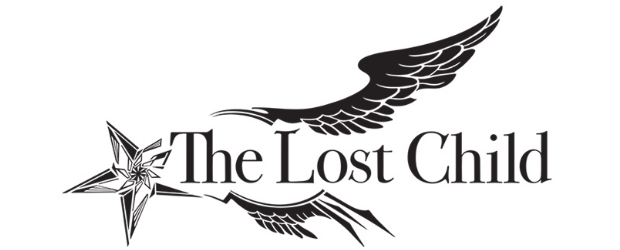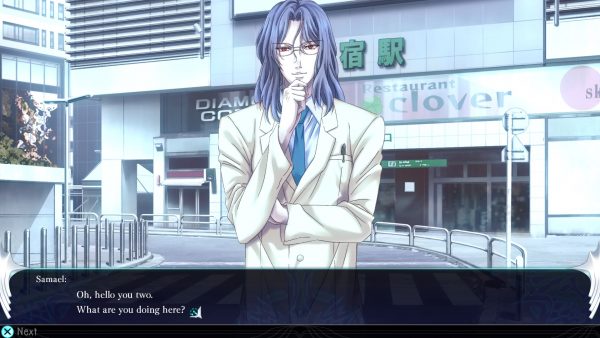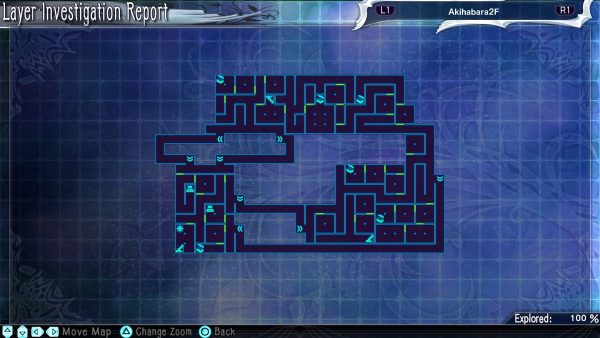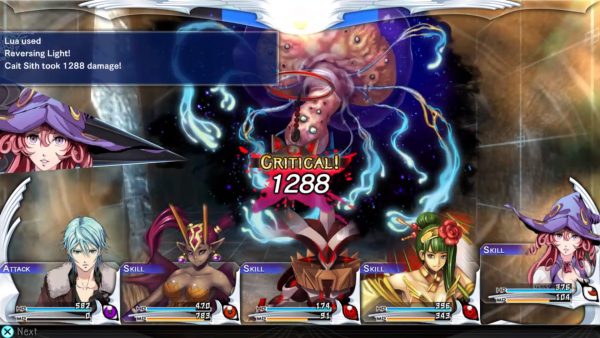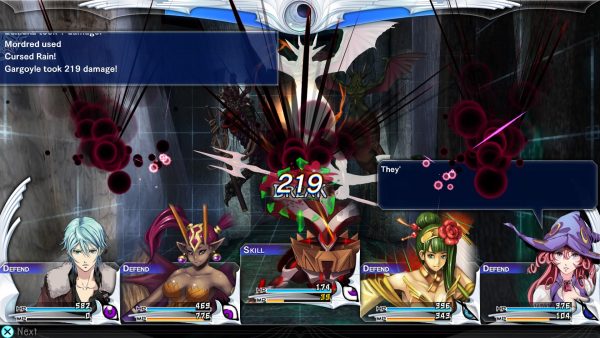Switch to: German
It’s great to see that new DRPGs (Diceless Role-Playing Games) are being released, even after the genre’s popularity has long since passed. While many new entries end up being somewhat bland, series like Etrian Odyssey manage to show that there is still a lot that can be done with the humble dungeon crawler. The Lost Child is not a game that tries to really bring anything new to the genre, and its few attempts at originality do little to improve an overall bland experience.
Unlike many RPGs, The Lost Child takes place in a modern day setting. Main character Hayato is a reporter for an occult magazine who quickly runs into trouble with demons. Lua, an angel and the only other permanent party member, gives Hayato the gangour. This device can capture demons, allowing him to effectively fight against the enemies he will start to encounter. The story is clearly not the game’s main focus, as little interesting happens until near the end. The Lost Child has some vague links to the developer’s previous game El Shaddai (XTgamer review), but they’re pretty much meaningless to the overall plot.
As with many dungeon crawlers developed or published by Kadokawa Games, The Lost Child follows a rather simplistic formula. You learn of a new area through tips given to the occult magazine, you talk to a couple of NPCs and then make your way into the dungeon. You’ll generally end up visiting dungeons multiple parts at different points during the story, but progress is very linear and there is usually little reason to visit places other than where you need to go for the next story event.
Dungeons in DRPGs are obviously a very important part of the genre, but there’s not much to look forward to here. The Lost Child has a decent amount of dungeons to explore, but most of them are lacking when it comes to their design and the various puzzles that they contain. Most floors also have a lot of dead ends that contain no treasure or any real reward for exploration. This is present in other dungeon crawlers too, but at least games like Mary Skelter (XTgamer review) actually try to make use of interesting dungeon design to keep the player engaged.
The one saving grace of The Lost Child is its monster capturing mechanic. Using the gangour, you can capture demons and later angels and fallen angels. Capturing is easy, only requiring you to kill an enemy using one of the gangour’s special attacks, and there is no limit to the amount of monsters you can carry at any time. Alongside experience which is used to level up Hayato and Lua, battles also reward three different types of karma. Karma acts as experience for monsters, but it isn’t instantly consumed after battle. Instead, you can freely give karma to any monster you own regardless of whether they’re in your party. This makes the process of powering up new monsters far faster since you can just use a stronger party to gather karma quickly. The monster catching mechanic may be simpler that other games, but it’s a nice change of pace not having to micromanage what monsters you’re carrying all the time.
The issue is that while the monster capturing mechanic might be decent, actually battling with them isn’t particularly fun. Combat plays out very similarly to most turn based DRPGs, the gangour being the only real unique feature. The gangour can only be used by Hayato, and has various attacks that can be powered up depending on the monsters in your party. Most of the attacks just end up being different variations of ‘do X amount of damage of Y element’, making the gangour a missed opportunity to spice up the battle system.
Worse than the gangour being a bland feature is the game’s poor difficulty balance. On the default setting The Lost Child is a cakewalk aside from a few bosses. Enemies die in one turn, and bosses usually only require you to spam your strongest moves. It makes creating a balanced party unnecessary, since you’ll be fine with a few monsters that know strong single target attacks. Now, you might be wondering why we didn’t just change to a harder difficulty setting. Well, the issue then ends up being that bosses are extremely unfair without many hours of grinding. The increase in difficulty between the two settings is far too large, either making the game incredibly easy or incredibly frustrating. A lot of this is down to accuracy, as on harder difficulties attacks miss far more frequently.
Like many Vita games The Lost Child doesn’t look so great when brought to consoles – we reviewed the PlayStation 4 version, the game is also available for Nintendo Switch. Monster designs looks fantastic, each faction having its own look, but these are somewhat ruined by the low resolution sprites used for almost everything. Strangely enough, the artwork used for the main characters is also worse than every other character and monster design. However, these still look better than the 3D environments. Compared to series like Demon Gaze and Etrian Odyssey that feature a variety of interesting locations, dungeons in The Lost Child lack are bland and lifeless.
Conclusion
I went into The Lost Child expecting little more than a serviceable dungeon crawler, and for the most part that’s what I got. Though there may have been a couple of interesting ideas here and there, this is a by-the-numbers DRPG that does little to stand out from better entries in the genre. I can only recommend The Lost Child if you’re really desperate for a new dungeon crawler to play.



